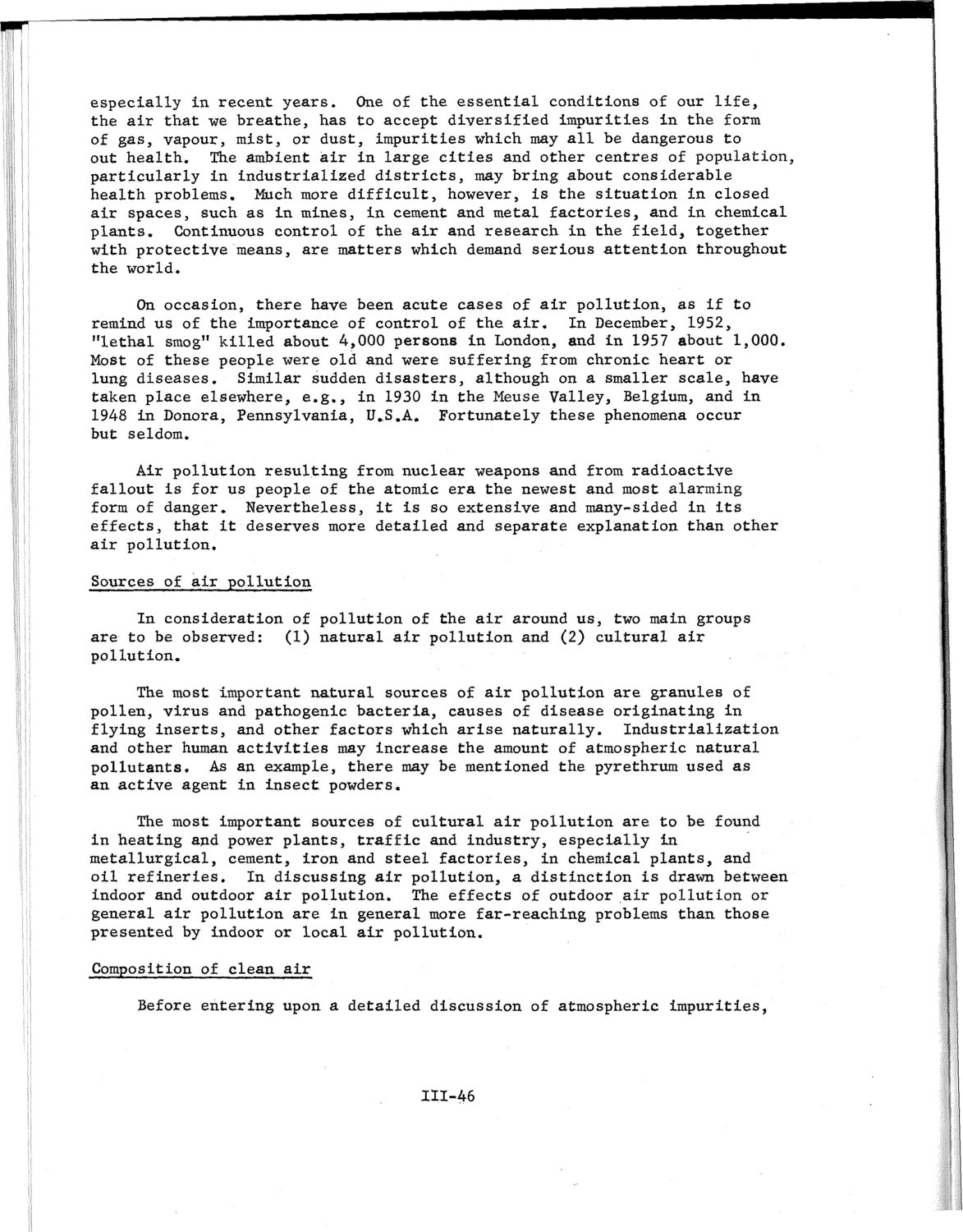| |
| |
Caption: SWE - Proceedings of the First International Conference of Women Engineers and Scientists
This is a reduced-resolution page image for fast online browsing.

EXTRACTED TEXT FROM PAGE:
especially in recent years. One of the essential conditions of our life, the air that we breathe, has to accept diversified impurities in the form of gas, vapour, mist, or dust, impurities which may all be dangerous to out health. The ambient air in large cities and other centres of population, particularly in industrialized districts, may bring about considerable health problems. Much more difficult, however, is the situation in closed air spaces, such as in mines, in cement and metal factories, and in chemical plants. Continuous control of the air and research in the field, together with protective means, are matters which demand serious attention throughout the world. On occasion, there have been acute cases of air pollution, as if to remind us of the importance of control of the air. In December, 1952, "lethal smog" killed about 4,000 persons in London, and in 1957 about 1,000. Most of these people were old and were suffering from chronic heart or lung diseases. Similar sudden disasters, although on a smaller scale, have taken place elsewhere, e.g., in 1930 in the Meuse Valley, Belgium, and in 1948 in Donora, Pennsylvania, IJ.S.A. Fortunately these phenomena occur but seldom. Air pollution resulting from nuclear weapons and from radioactive fallout is for us people of the atomic era the newest and most alarming form of danger. Nevertheless, it is so extensive and many-sided in its effects, that it deserves more detailed and separate explanation than other air pollution. Sources of air pollution In consideration of pollution of the air around us, two main groups are to be observed: (1) natural air pollution and (2) cultural air pollution. The most important natural sources of air pollution are granules of pollen, virus and pathogenic bacteria, causes of disease originating in flying inserts, and other factors which arise naturally. Industrialization and other human activities may increase the amount of atmospheric natural pollutants. As an example, there may be mentioned the pyrethrum used as an active agent in insect powders. The most important sources of cultural air pollution are to be found in heating and power plants, traffic and industry, especially in metallurgical, cement, iron and steel factories, in chemical plants, and oil refineries. In discussing air pollution, a distinction is drawn between indoor and outdoor air pollution. The effects of outdoor air pollution or general air pollution are in general more far-reaching problems than those presented by indoor or local air pollution. Composition of clean air Before entering upon a detailed discussion of atmospheric impurities, 111-46
| |